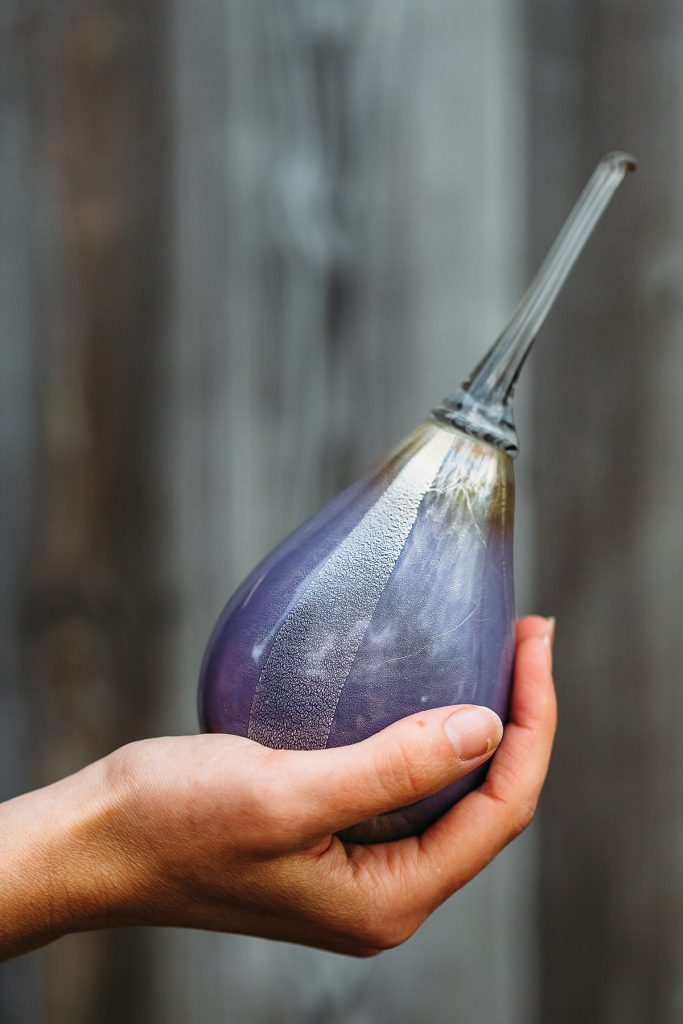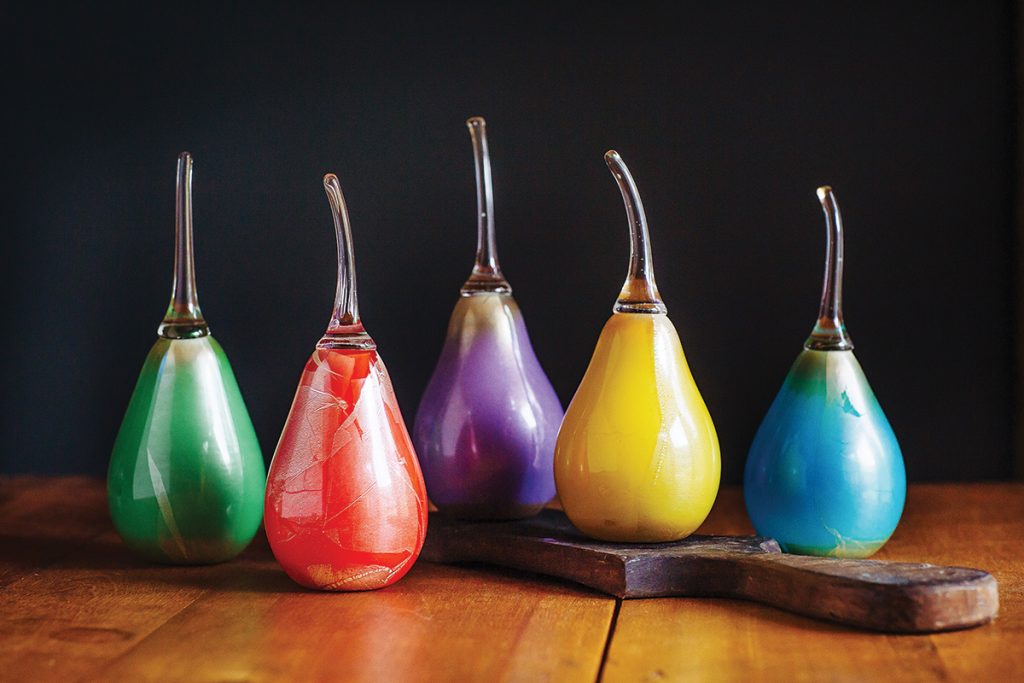Scott Summerfield prefers to work alone. Not surprising when you learn he was an only child who grew up on a sparsely populated barrier island on the North Carolina coast. He recalls spending countless hours making models (helicopters, cars, trucks, boats, planes) starting when he was only six. “Having very few kids to play with on the island, it was a hobby I could do by myself.”

Photo by Tim Robison
At 13, he began helping out at his parents’ screenprinting business, and continued working there summers and after school for several years. By the time he was in his early twenties, though, he knew he did not want this to be his life’s work. “It was a tough decision, being an only child,” he admits, “but my parents fully supported me.”
As a surprise for him since he’d expressed an interest in glass, his mother enrolled him in a course in flame work at Penland School of Craft in 1997. While there, he found not only a love for glass but also for potter Liz Zlot, the woman he would eventually marry. He continued his education in glass at the Appalachian Center for Craft in Smithville, Tennessee, and as an apprentice for a glass artist in St. Paul, Minnesota, for three years.

Photo by Tim Robison
“I learned to blow glass and develop a style. I became influenced by Swedish and Australian glass arts and drawn to harder edges, assembled pieces … lots of color.”
He and Liz returned to North Carolina in 2004 and purchased land near Bakersville. On the property was a large outbuilding, which would become their clay studio, glass studio, and showroom. Over a period of several months, they built everything themselves for their respective workspaces. “We were young and optimistic,” says Summerfield. “We just woke up each day with a task and got it done.”
Finishing his bold, Scandinavian-feel vessels and small sculptures, on the other hand, is about finding a balance between friction and resolution. “The emotional tension,” he explains, “is created by a mixture of soft and hard lines throughout the work. [The individual] stacked forms are purposely assembled off balance, but find their balance as one within a group.”
The work begins in the furnaces in his hot shop, where he creates the blown parts that he will later assemble in the cold shop using tools that include diamond grinders and lathes. “In the hot shop, I am focused on timing and efficiency,” says Summerfield. “The cold shop is about contemplation and slowing down, where time is not an issue; rather accuracy is.”

Photo by Tim Robison

Bottle Set
Photo by Tim Robison
Ten years ago, Liz was diagnosed with lymphoma, so Scott stopped blowing glass for a year to focus on their then-two-year-old daughter, Roby. As a stress-coping mechanism, he began making stringed instruments from wood harvested off their property — mostly electric basses — a creativity outlet without the pressure of production and sales. “Even after Liz’s full recovery,” says Summerfield, “I still make these instruments, playing them here at the house and for visitors to our showroom. I always tell her, ‘This is my last one,’ but the ideas keep coming, so I keep making.”
While most successful glass artists use assistants, Summerfield, as in childhood, still goes it alone. “Taking this different approach,” he says, “defines my work.”
Scott Summerfield, 810 Water St., Bakersville. Contact the artist by e-mail for studio visits by appointment: scott@scottsummerfieldglass.com. www.scottsummerfieldglass.com. Summerfield’s art is sold locally at Miya Gallery (20 North Main St., Weaverville, miyagallery.com), at the Southern Highland Craft Guild shop in Biltmore Village (26 Lodge St., southernhighlandguild.org), and through the online retailer artfulhome.com.